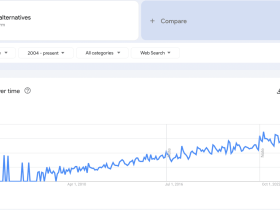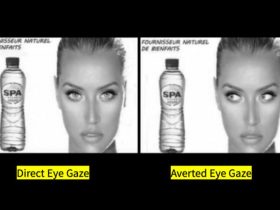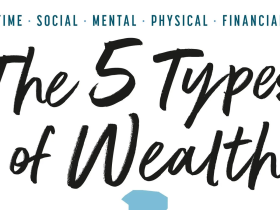The percentage of U.S. adults who identify as lesbian, gay, bisexual, transgender, or something other than heterosexual has reached a record high, according to a new Gallup poll. The 2024 survey found that 9.3% of American adults identify as LGBTQ, a notable increase from the 7.6% reported in 2023. The data suggests a steady rise in the number of people openly identifying as part of the LGBTQ community, reflecting evolving social attitudes and greater visibility of diverse identities in the United States.
The recent Gallup poll highlights a continued upward trend in LGBTQ identification across the country. When Gallup first conducted this survey in 2012, only 3.5% of respondents identified as LGBTQ. The number has nearly tripled in just over a decade, demonstrating a significant shift in societal openness and self-identification.
Jeff Jones, a senior editor at Gallup, expressed surprise at the pace of this increase. “I didn’t think we would get to 10% as quickly,” Jones told NBC News. “We’re not quite there yet, but it seems like maybe it’s only a few years away, where before I thought it could have been a couple decades or so. We’re getting pretty close to that 1 in 10 figure, which I think would be a notable milestone.”
This growing visibility suggests that societal norms around sexual orientation and gender identity are changing rapidly, allowing more people to feel comfortable expressing their authentic selves.
How Gallup Conducted the Survey
To gather these figures, Gallup researchers conducted random telephone interviews throughout the past year. The study included more than 14,000 adults from all 50 states and Washington, D.C. Of those surveyed, over 900 identified as LGBTQ. Gallup then weighted the data to ensure it accurately represented the U.S. national population. The survey’s reported margins of sampling error are plus or minus 4 percentage points among respondents.
Demographics of LGBTQ Identification
The survey also provided insight into which demographics are more likely to identify as LGBTQ. Certain groups reported significantly higher levels of LGBTQ identification compared to others, including:
- Women were more likely than men to identify as LGBTQ.
- Democrats reported higher LGBTQ identification rates compared to Republicans.
- Urban residents were more likely to identify as LGBTQ than their rural counterparts.
- Younger generations were far more likely to identify as LGBTQ compared to older generations.
These trends suggest that factors such as political affiliation, geographical location, and generational differences influence the likelihood of individuals openly identifying as LGBTQ. Social attitudes, cultural shifts, and policy changes may contribute to these variations across demographics.
Bisexual Identification Leads Among LGBTQ Adults
One of the most significant findings of the Gallup survey is that bisexuality remains the most common LGBTQ identity in the United States. According to the 2024 data, 56.3% of all LGBTQ adults identified as bisexual. However, this percentage decreases significantly with age.
Younger generations are much more likely to identify as bisexual compared to older adults. This suggests that as societal norms evolve, younger people feel more comfortable embracing fluid sexual orientations. The data also indicates that bisexuality is becoming a more widely recognized and accepted identity.
The Rapid Growth of LGBTQ Identification Since 2012
The substantial increase in LGBTQ identification from 2012 to 2024 highlights significant cultural and social shifts in the U.S. population. In 2012, when Gallup first conducted this survey, only 3.5% of American adults identified as LGBTQ. This number remained relatively stable in the early years but started to rise more rapidly in recent times.
Several factors may be contributing to this trend:
Increased Visibility and Representation: Greater LGBTQ representation in media, politics, and society has helped normalize diverse identities. High-profile LGBTQ celebrities, athletes, and public figures have influenced cultural perceptions, making it easier for individuals to come out.
Legal and Social Progress: Legal advancements, including the nationwide legalization of same-sex marriage in 2015, increased anti-discrimination protections, and broader public acceptance of LGBTQ rights, have created a more inclusive environment.
Changing Attitudes Among Younger Generations: Younger generations, including Millennials and Generation Z, have grown up in a more accepting society. Studies show that younger people are less likely to view sexual orientation and gender identity as rigid categories.
Greater Willingness to Self-Identify: The stigma surrounding LGBTQ identities has decreased significantly in recent years, encouraging more people to openly identify as LGBTQ.
Regional and Political Differences in LGBTQ Identification
While the overall percentage of LGBTQ Americans has risen nationwide, certain regions and political groups report higher rates of identification than others. According to the Gallup data, urban areas tend to have a higher percentage of LGBTQ residents compared to rural areas. Additionally, Democratic-leaning individuals are significantly more likely to identify as LGBTQ compared to Republican-leaning individuals.
These disparities may reflect differences in cultural attitudes, policy environments, and local support systems for LGBTQ individuals. Urban areas often provide more inclusive communities and resources, while rural areas may still have lingering social stigmas surrounding LGBTQ identities.
The Future of LGBTQ Identification in the U.S.
With LGBTQ identification reaching an all-time high and nearing 10% of the U.S. adult population, experts anticipate that this number will continue to grow in the coming years. Given the steady rise in recent decades, it is possible that LGBTQ identification will soon reach or surpass the “one in ten” milestone.
The latest Gallup poll confirms that LGBTQ identification in the United States has reached record highs, with 9.3% of U.S. adults identifying as lesbian, gay, bisexual, transgender, or another non-heterosexual identity. This increase reflects changing societal attitudes, legal progress, and growing visibility of LGBTQ individuals across various aspects of life.
With younger generations leading the way and bisexuality being the most common LGBTQ identity, it is clear that perspectives on sexual orientation and gender identity continue to evolve. As the country moves closer to the symbolic “one in ten” milestone, the future of LGBTQ identification in America remains an area of significant cultural transformation.
The rapid rise in self-identification also emphasizes the importance of policies and protections that support LGBTQ individuals in all aspects of life. As visibility and acceptance increase, the need for continued advocacy and education remains crucial to ensuring a more inclusive society for future generations.




